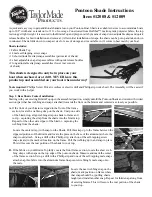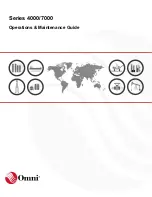
1.4
Symbols and conventions
1.4.1
Safety indication symbols
The caution icon indicates important information or warning related
to the concept discussed in the text. It might indicate the presence
of a hazard which could result in corruption of software or damage
to equipment or property.
The information icon alerts the reader to important facts and
conditions.
The tip icon indicates advice on, for example, how to design your
project or how to use a certain function.
Although warning hazards are related to personal injury, it should be understood
that operation of damaged equipment could, under certain operational conditions,
result in degraded process performance leading to personal injury or death.
Therefore, comply fully with all warning and caution notices.
1.4.2
Manual conventions
Conventions used in IED manuals. A particular convention may not be used in this
manual.
•
Abbreviations and acronyms in this manual are spelled out in Glossary.
Glossary also contains definitions of important terms.
•
Push button navigation in the LHMI menu structure is presented by using the
push button icons, for example:
To navigate between the options, use
and
.
•
HMI menu paths are presented in bold, for example:
Select
Main menu/Settings
.
•
LHMI messages are shown in Courier font, for example:
To save the changes in non-volatile memory, select
Yes
and press
.
•
Parameter names are shown in italics, for example:
The function can be enabled and disabled with the
Operation
setting.
•
The ^ character in front of an input or output signal name in the function block
symbol given for a function, indicates that the user can set an own signal name
in PCM600.
•
The * character after an input or output signal name in the function block
symbol given for a function, indicates that the signal must be connected to
another function block in the application configuration to achieve a valid
application configuration.
Section 1
1MRS756791 A
Introduction
6
630 series
Point List Manual













































